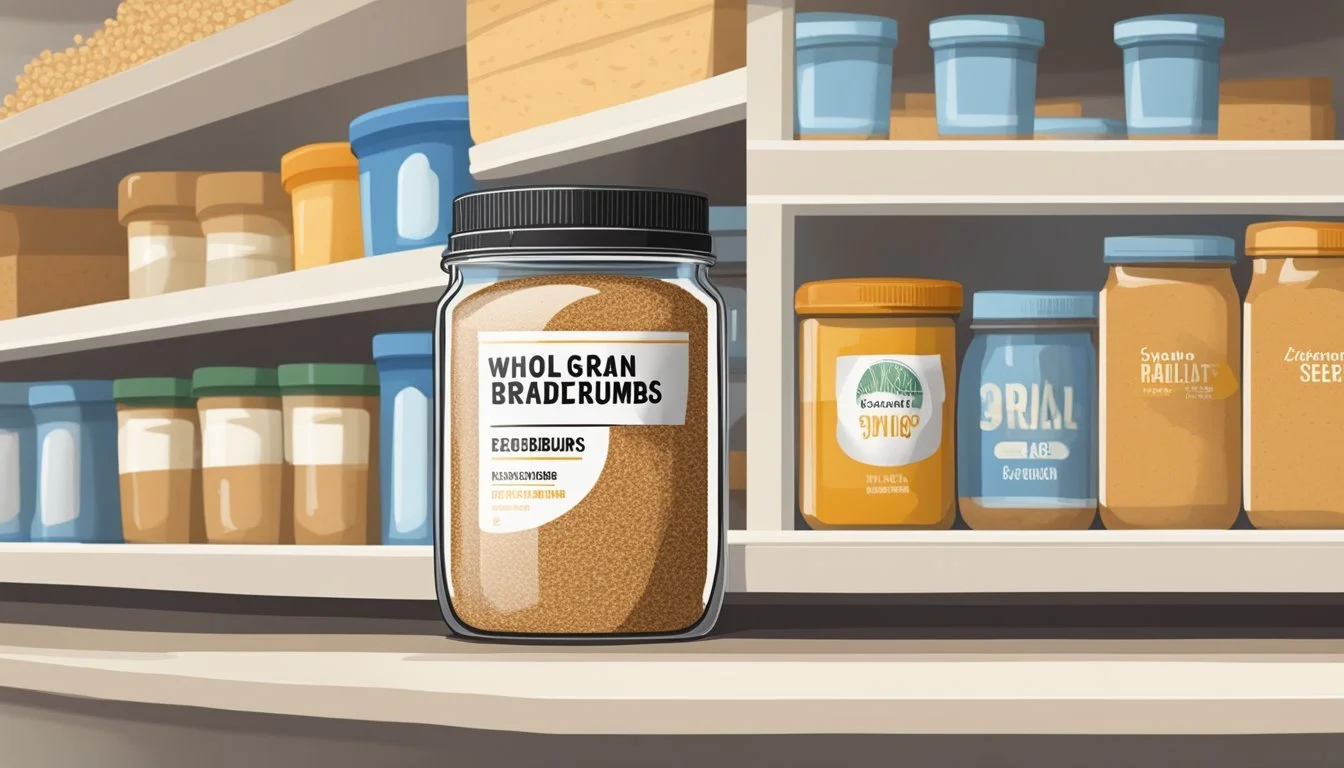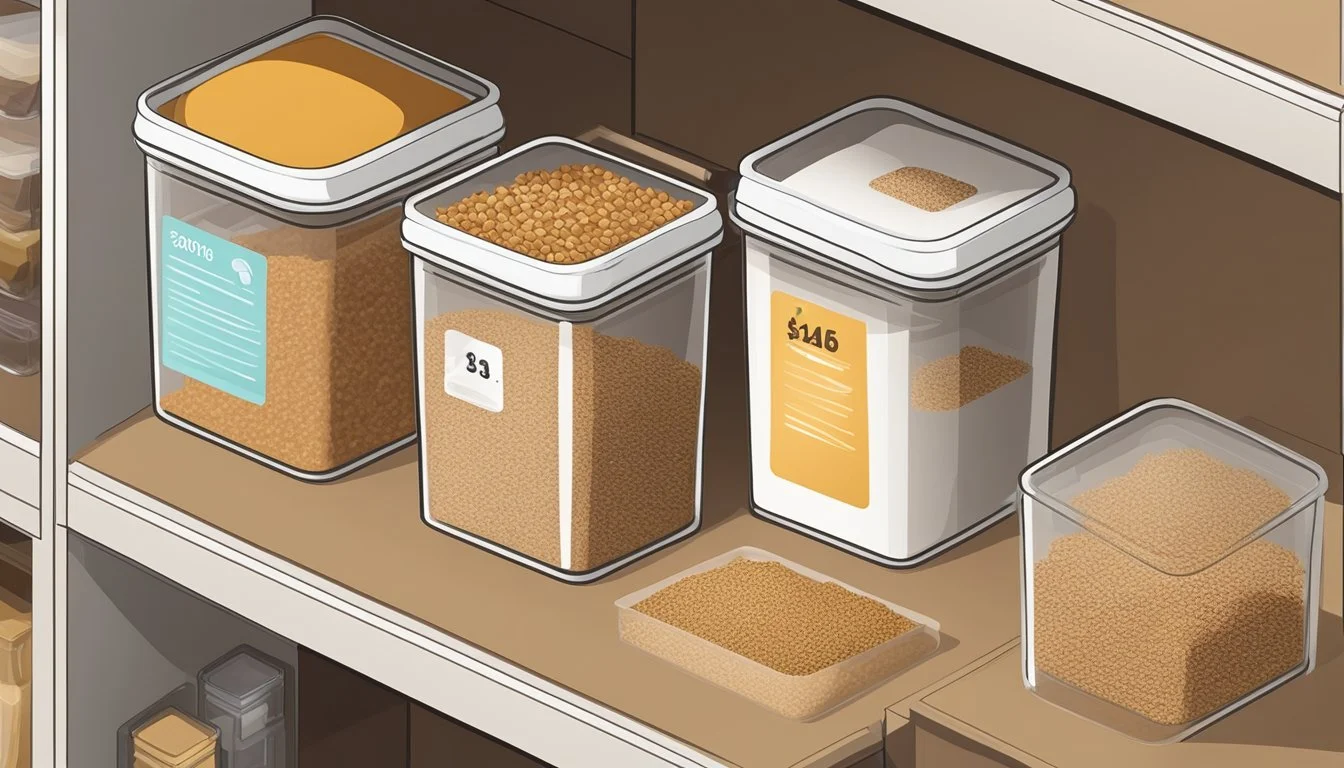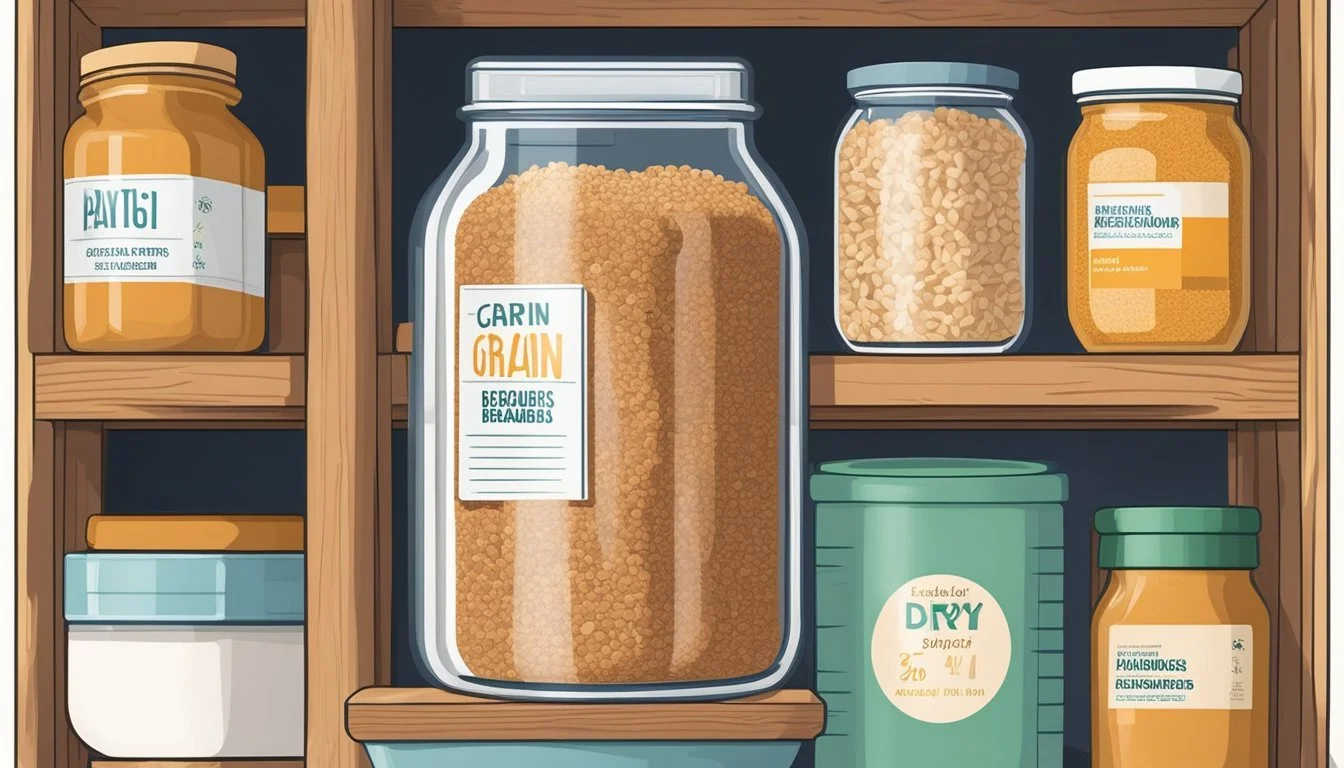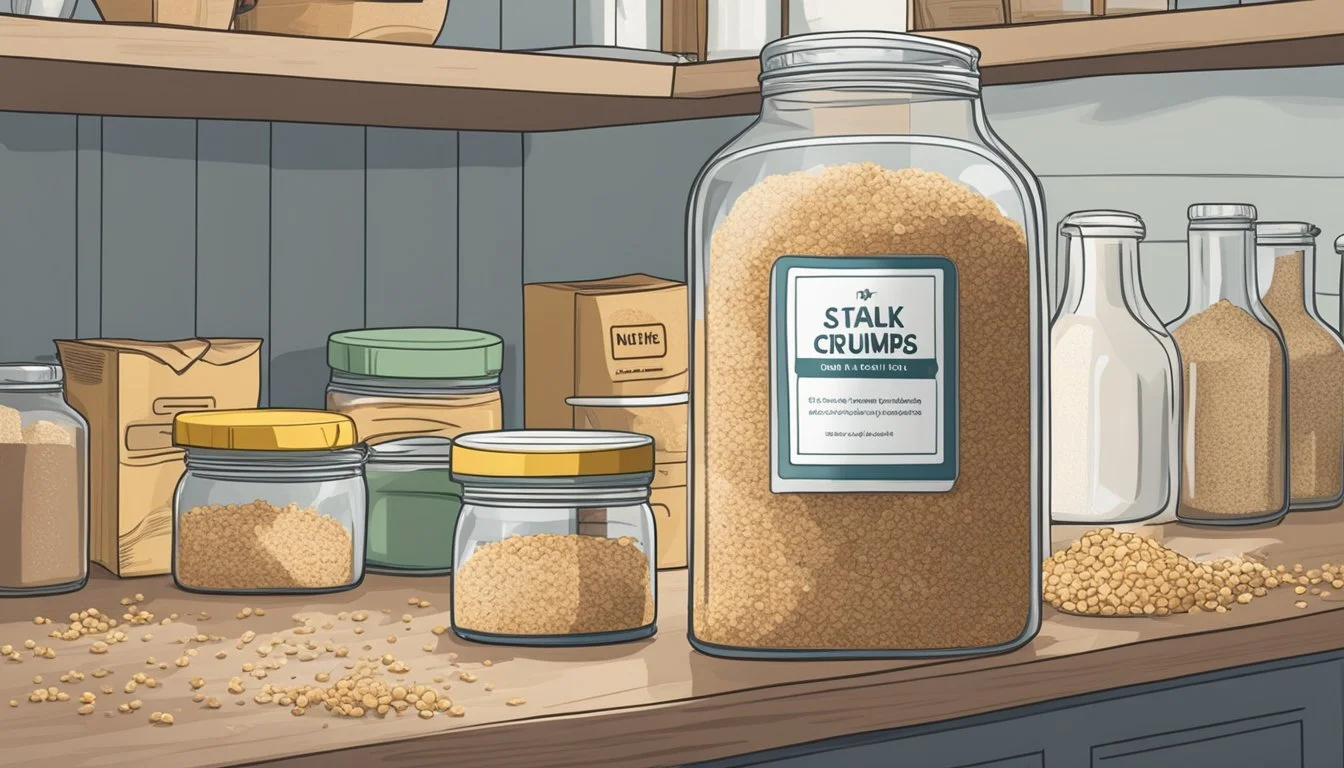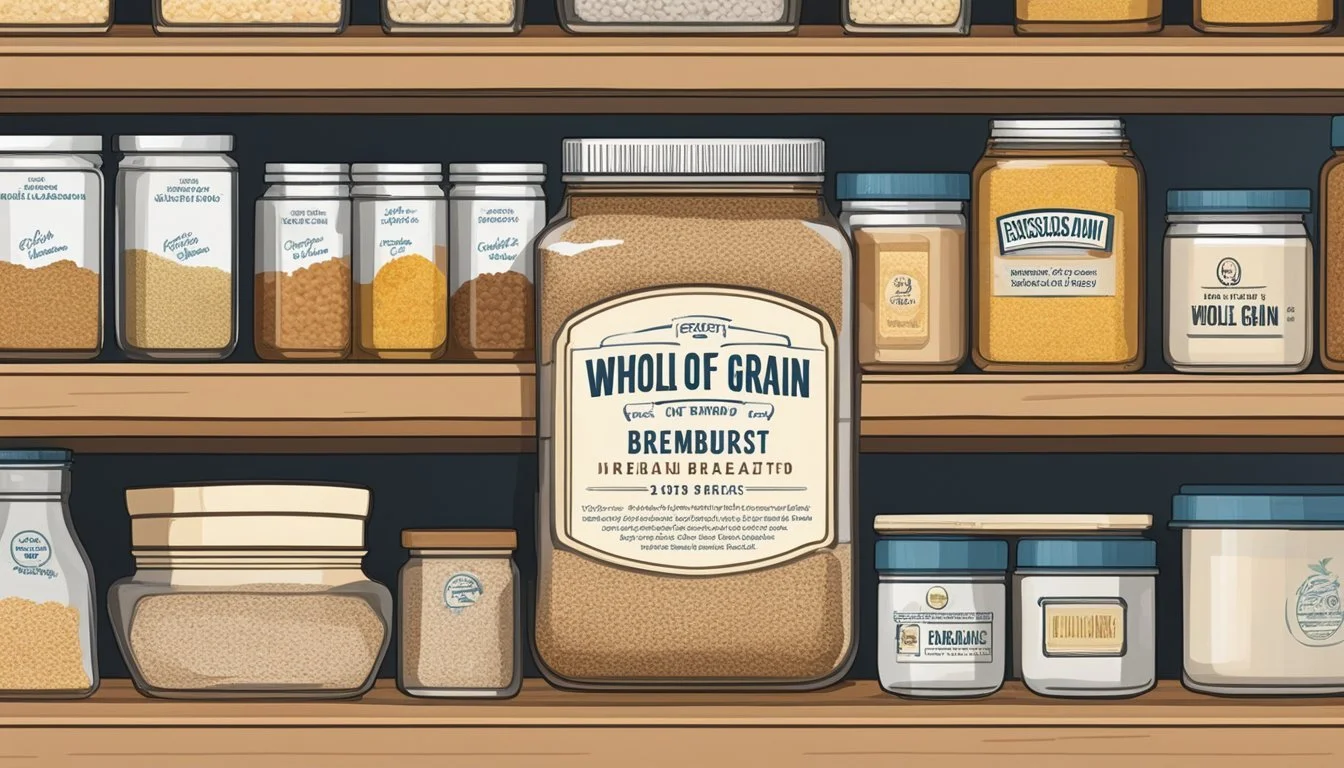How Long Do Whole Grain Breadcrumbs Last
Shelf Life and Storage Tips
Whole grain breadcrumbs, an integral component in various recipes from meatloaf to casseroles, possess a distinct shelf life that consumers should be aware of to ensure they maintain both quality and flavor. Typically, whole grain breadcrumbs have a shorter shelf life than their white bread (What wine goes well with bread?) counterparts due to the higher oil content from the grains which can turn rancid over time.
When stored in a pantry at room temperature, whole grain breadcrumbs can remain usable for up to six months provided they are kept in an airtight container to prevent moisture from shortening their lifespan. For an extended storage period, refrigerating whole grain breadcrumbs can keep them fresh for approximately one to two months past their expiration date, while freezing can extend their life even further, up to six months or more.
It is crucial to check whole grain breadcrumbs for signs of spoilage, such as an off odor, changes in color, or any visible mold, before using them in cooking. Bread crumbs that have spoiled should not be used as they could negatively impact the flavor of the dish and potentially lead to foodborne illnesses.
Understanding Whole Grain Breadcrumbs
Whole grain breadcrumbs are created by repurposing whole wheat bread, offering a nuttier flavor and nutritional benefits compared to their white bread counterparts. These breadcrumbs include the entirety of the grain, retaining the bran, germ, and endosperm, which means they provide more fiber and nutrients.
There are two primary types of whole grain breadcrumbs available: store-bought and homemade. Store-bought breadcrumbs are typically shelf-stable and can last quite a while when stored properly. The commercial processing usually includes drying the breadcrumbs thoroughly to extend shelf life. On the other hand, homemade breadcrumbs are made by processing fresh or stale whole wheat bread into crumbs, which may vary between fresh breadcrumbs and dried breadcrumbs.
For those interested in the nuances of breadcrumb types, panko breadcrumbs offer a lighter, airier texture often sought after in certain recipes, but one can also find whole grain panko for a healthier twist. Additionally, both homemade and store-bought breadcrumbs can be seasoned for extra flavor.
Here’s a quick reference for storing whole grain breadcrumbs:
Storage Condition Homemade Longevity Store-bought Longevity Pantry (dry, airtight) 1-2 weeks (fresh)/1 month (dried) 3-6 months past 'best by' date Refrigerator Up to 1 month Not typically necessary Freezer 4-6 months 6-8 months
It is vital for consumers to store both homemade and store-bought whole grain breadcrumbs in dry, airtight containers to prevent spoilage and extend shelf life. One should regularly check for any signs of moisture or mold, especially in homemade varieties, as these are clear indicators that the breadcrumbs may have gone bad.
Storage Fundamentals
When storing whole grain breadcrumbs for prolonged freshness, maintaining proper storage conditions and using the right containers are crucial. These guidelines ensure the breadcrumbs retain their quality and taste while preventing spoilage.
Proper Storage Conditions
One should store whole grain breadcrumbs in a cool, dry place, away from direct sunlight and sources of moisture. The refrigerator can be used for short-term storage; however, for extended periods, a freezer offers the best condition to prolong freshness. Breadcrumbs absorb odors easily, so they should be kept away from strong-smelling foods.
Choosing the Right Containers
Airtight containers are paramount when it comes to storing breadcrumbs. These can range from sealable plastic bags to glass or aluminum containers with tight-fitting lids. The choice of container should ideally block out light and prevent air exchange, which can lead to the breadcrumbs becoming stale. If using a plastic bag, one may consider double-bagging for extra protection against moisture and odors. The seal integrity of the package is key to prevent unwanted pests and ensure the breadcrumbs remain dry and fresh.
Shelf Life and Freshness
When considering whole grain breadcrumbs, their shelf life and freshness are paramount to maintaining their flavor and quality. It is essential to understand how to assess their freshness and know the optimal storage lengths to ensure they provide the best taste when used.
Assessing the Freshness
To determine whether whole grain breadcrumbs are still fresh, one should look for signs of spoilage such as mold, off odors, or an unexpected sour taste. Additionally, the texture should remain crumbly, without any noticeable dampness or clumps. Fresh breadcrumbs will exhibit a pleasant, grainy aroma and retain their inherent nutty flavor characteristic of whole grain products.
Optimal Shelf Life
The optimal shelf life of whole grain breadcrumbs can vary depending on storage methods and whether they are bought from the store or made at home. Store-bought whole grain breadcrumbs can last:
Pantry: Up to six months from the best-by date, in a cool, dry place
Freezer: Up to one year past the expiration date, if properly sealed
For homemade whole grain breadcrumbs, the shelf life is typically shorter:
Pantry: Maximum of two weeks when stored in a dry and cool environment
Refrigerator: One to two months when kept in an airtight container
Freezer: Up to six months if properly sealed to prevent freezer burn
It's crucial to note that the best-by date on the packaging can serve as a general guideline for determining the expected shelf life; however, one may often safely use breadcrumbs beyond this date if they have been stored correctly and show no signs of spoilage.
Recognizing Spoilage
When storing whole grain breadcrumbs, it's vital to identify signs of spoilage to ensure the safety and quality of the product. Early detection can prevent the consumption of spoiled breadcrumbs, which may lead to foodborne illnesses.
Signs of Spoilage
Mold: Visible mold, which might appear in various colors like white, green, or black, is a clear indicator that breadcrumbs have gone bad.
Odor: An off odor, often musty or sour, is a sign that the breadcrumbs should no longer be consumed.
Texture and Color: The freshness of breadcrumbs can be assessed by their texture and color. If they become hard or if their color has noticeably darkened, this suggests staleness or the beginning of spoilage.
Taste: A sour taste is a telltale sign that breadcrumbs have spoiled and should be discarded.
Infestations: The presence of pantry bugs indicates that the breadcrumbs are infested and should not be used.
Preventing Spoilage
Storage: Store whole grain breadcrumbs in a cool, dry place inside a sealed container or bag to prevent exposure to moisture and pests.
Temperature Control: Avoid storing breadcrumbs near sources of heat, which can accelerate spoilage.
Check Regularly: Regularly inspecting breadcrumbs for any signs of spoilage helps in early detection and prevents the use of compromised products.
Extending Breadcrumb Shelf Life
When it comes to extending the shelf life of whole grain breadcrumbs, the critical factors boil down to storage temperature and moisture control. Achieving the right balance ensures breadcrumbs remain fresh for longer periods.
Refrigeration vs. Freezing
Storing whole grain breadcrumbs in a refrigerator can moderately extend their shelf life. To refrigerate, one must ensure the breadcrumbs are kept in a sealed container to protect them from humidity and external smells. Refrigeration can keep breadcrumbs fresh for up to one month.
In contrast, freezing offers a more long-term solution. When freezing, breadcrumbs should be placed in a resealable freezer bag or an airtight container to prevent freezer burn and absorbance of odors. This method can extend shelf life for up to six months. It is important to let the breadcrumbs cool to room temperature before sealing them to avoid condensation that can lead to sogginess.
Dry Place Storage
For those opting not to refrigerate or freeze, storing breadcrumbs in a cool and dry place is paramount. A pantry or cupboard can serve as an ideal location, away from heat sources and sunlight. Whole grain breadcrumbs should be kept in an airtight container to protect them from moisture and pests. This method typically allows breadcrumbs to last for up to two weeks. Regular checks for freshness are recommended to avoid spoilage.
Using Stale Breadcrumbs
When whole grain breadcrumbs become stale, they need not be discarded as their utility extends beyond their freshest state. They can serve various functions in cooking, including as a thickening agent or a crispy coating.
Culinary Uses for Stale Breadcrumbs
Stale breadcrumbs are surprisingly versatile in the kitchen. They can be rejuvenated through a light toasting, which restores their crisp texture, making them ideal for several culinary applications. Below are specific ways to utilize stale whole grain breadcrumbs:
Thickening Soups and Stews: Stale breadcrumbs can be employed as a thickener in soups and stews. When one integrates them into the liquid, the breadcrumbs absorb excess moisture and contribute to a heartier texture.
Example: To thicken a stew, simply sprinkle in breadcrumbs while at a simmer and stir until the desired consistency is reached.
Coating for Fried Dishes: They offer a healthy, fibrous alternative to white flour for coating. One can achieve a crunchy exterior on fried foods by first dipping them in a liquid (like egg or milk), then coating them evenly in seasoned whole grain breadcrumbs.
Example: For a crispy fried chicken, coat the pieces in breadcrumbs after dipping in egg, ensuring even coverage, then fry until golden brown.
Baking: When included in the batter or as a topping, stale breadcrumbs can introduce a pleasant texture to baked goods.
Example: Mix breadcrumbs into meatloaf to improve its structure, or sprinkle atop macaroni and cheese before baking to add a crunchy crust.
To process stale bread into breadcrumbs, one can simply break it into small pieces and pulse it in a food processor until desired fineness is achieved. If the breadcrumbs are to be stored, one should ensure they are kept in an airtight container at room temperature to maintain dryness. By doing this, their shelf life can be extended and their potential uses in a variety of dishes are maximized.
Frequently Asked Questions
How long do whole grain breadcrumbs last?
Whole grain breadcrumbs can last up to 4-6 months when stored in a pantry and up to 12 months if kept in the freezer. It's important to store them in a dry and cool environment to maximize their shelf life.
What storage conditions are best for whole grain breadcrumbs?
For optimal storage, whole grain breadcrumbs should be kept in an airtight container to protect them from moisture and oxygen, which can accelerate spoilage. The storage area should be cool and dry to prevent mold growth.
Can adding herbs affect the shelf life of whole grain breadcrumbs?
Adding herbs to breadcrumbs may introduce additional moisture, potentially shortening their shelf life. To ensure longevity, one should consider storing herbed breadcrumbs in the freezer where they can last longer due to the reduced temperature.
Does salt in whole grain breadcrumbs extend their freshness?
Salt is a natural preservative that can help curb bacterial growth. Whole grain breadcrumbs with salt may, therefore, have a slightly extended shelf life compared to unsalted varieties.
How does oxygen affect the storage of whole grain breadcrumbs?
Oxygen can lead to oxidation of fats which might be present in whole grain breadcrumbs, potentially causing them to turn rancid. An oxygen-free environment, such as vacuum-sealed bags, is ideal for prolongation of freshness.
What signs indicate that whole grain breadcrumbs have gone bad?
If one notices an odd odor, mold presence, or breadcrumbs have become clumpy or hard, they should be discarded. Taste should not be used as a determining factor due to the potential health risk of ingesting spoiled food.
Should whole grain breadcrumbs be labeled with a date mark?
A date mark is recommended to keep track of how long the whole grain breadcrumbs have been in storage. Consumers are encouraged to label the container with the storage date to monitor shelf life and ensure quality.

